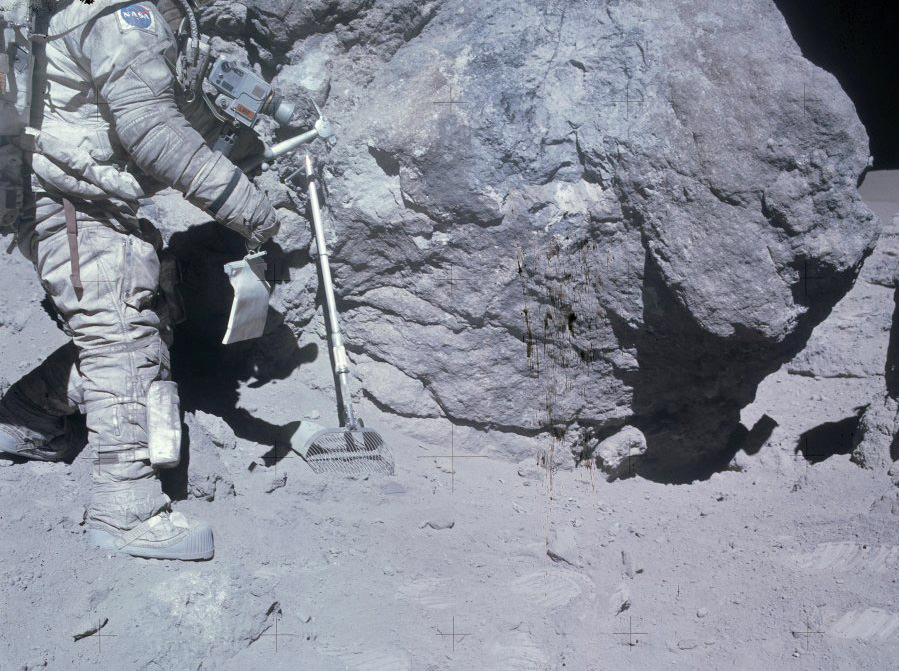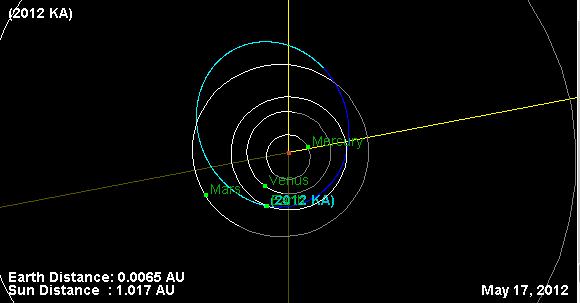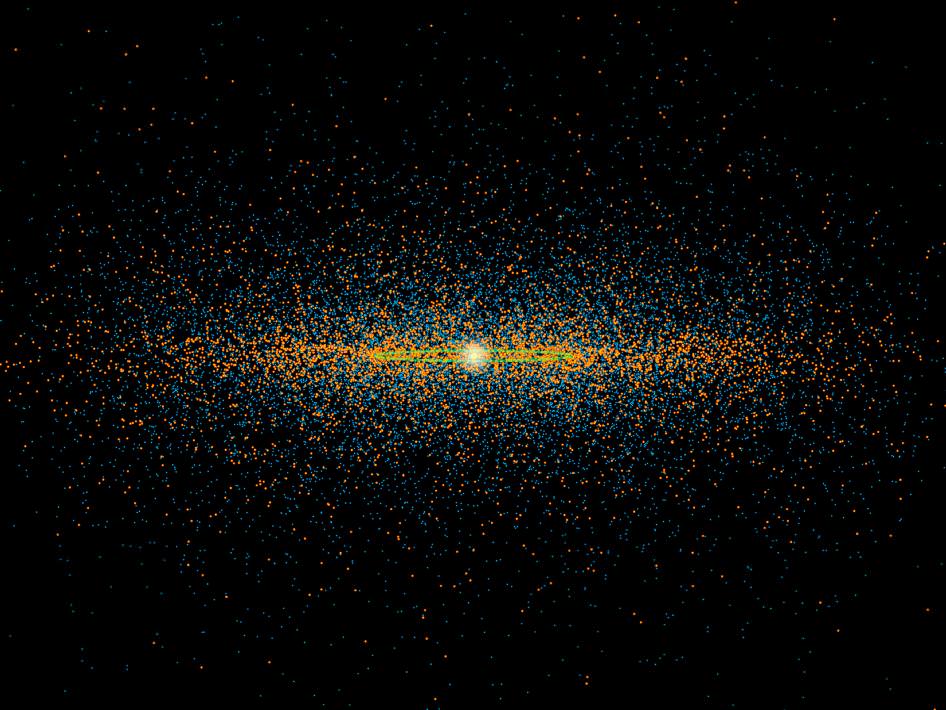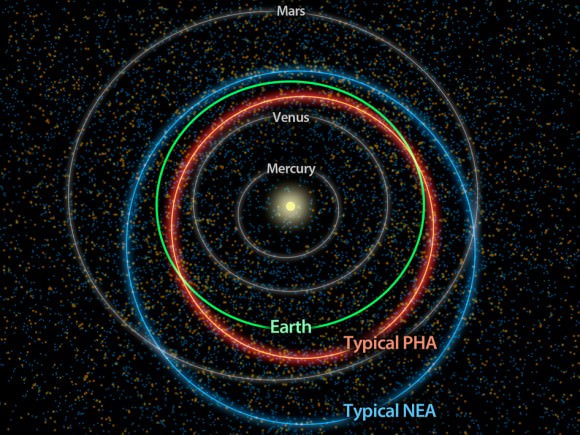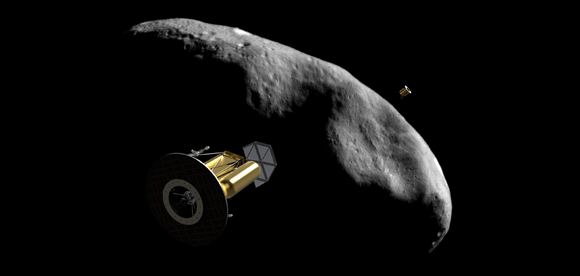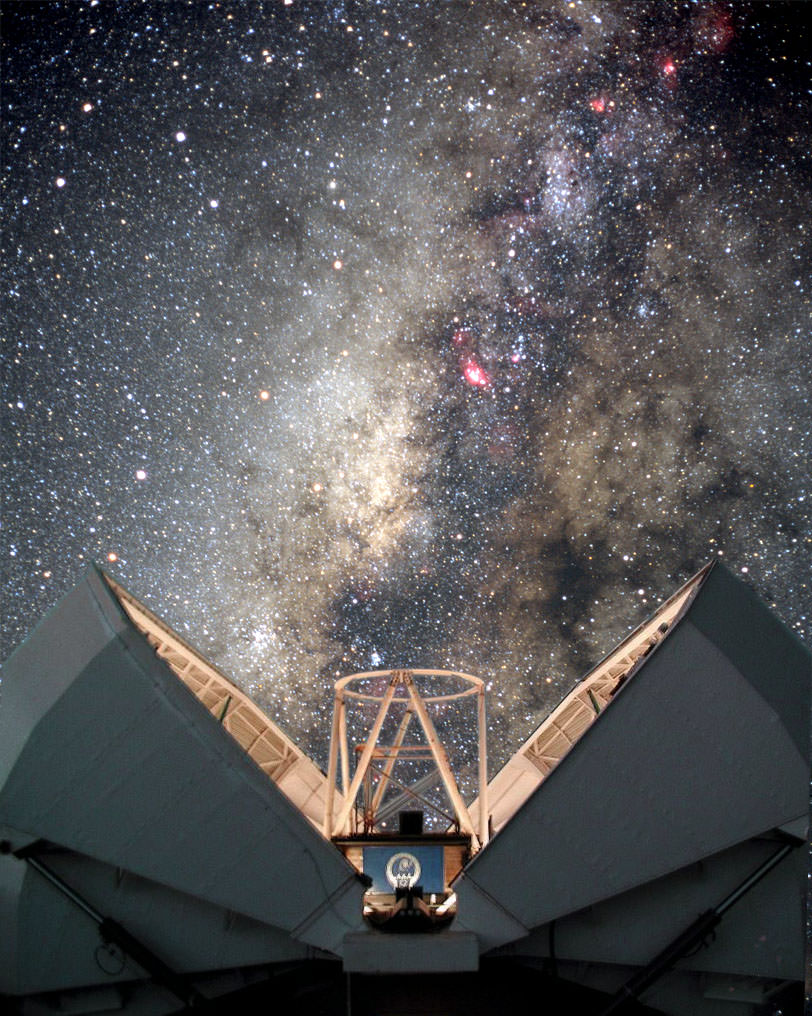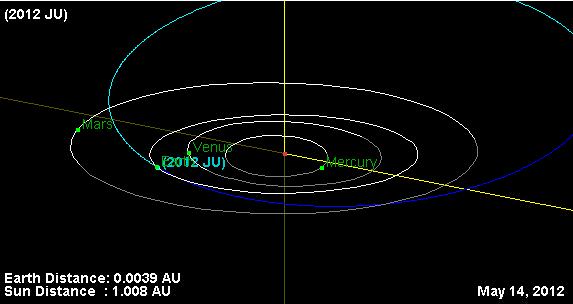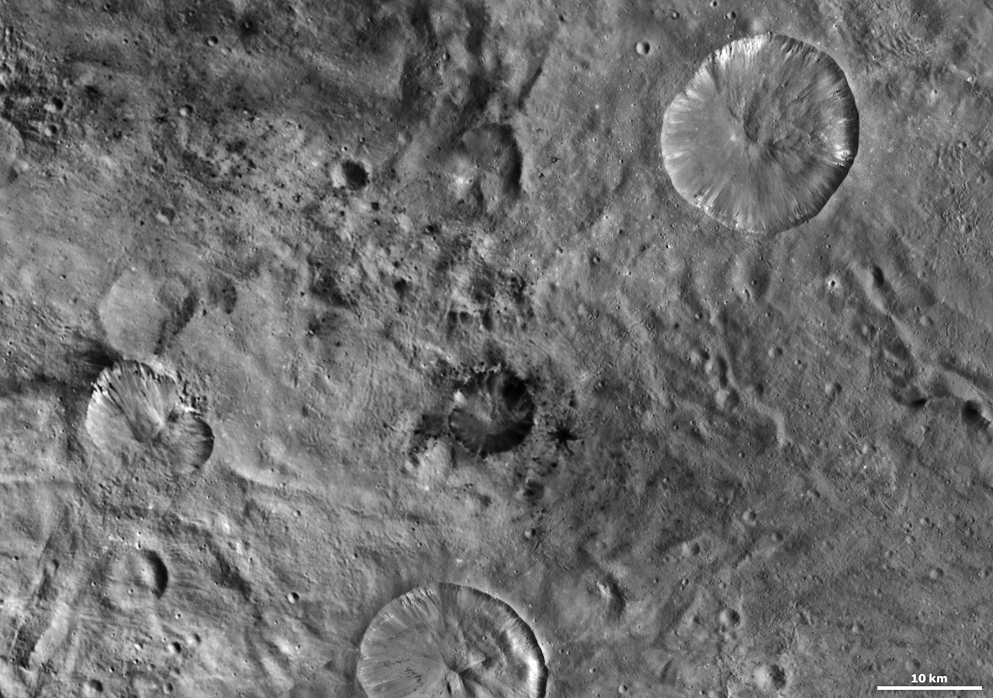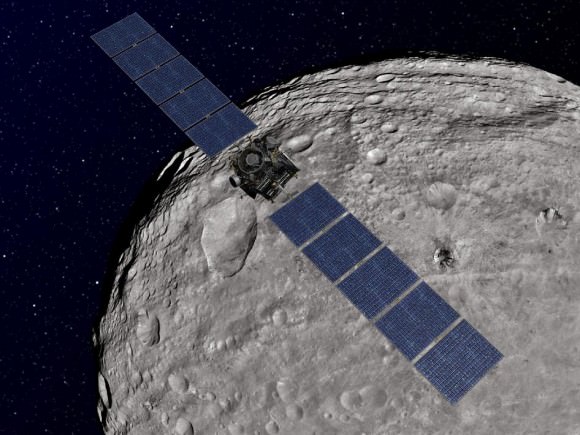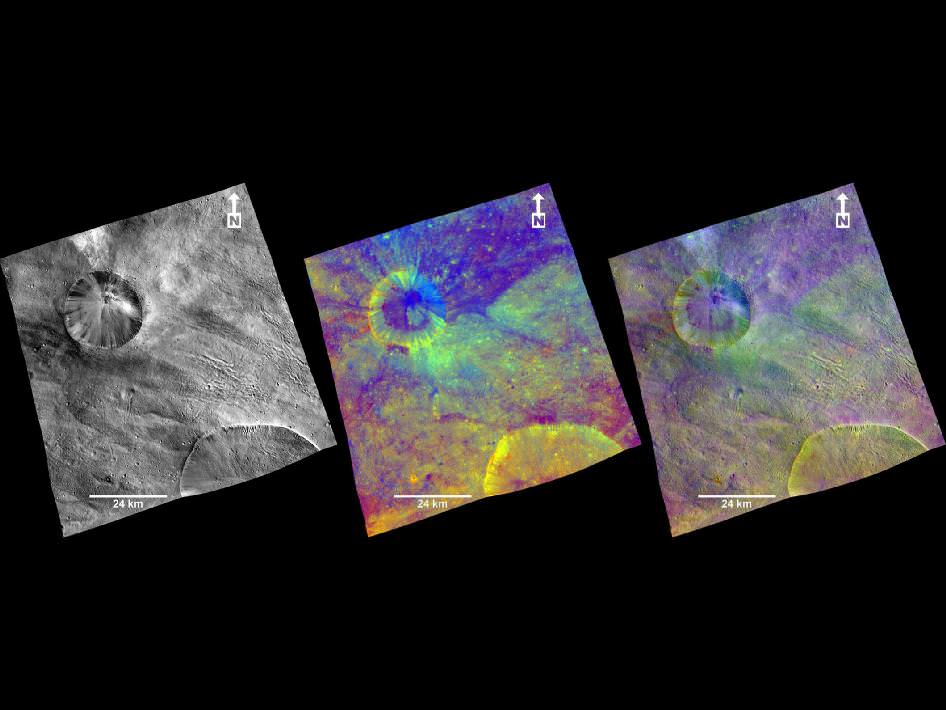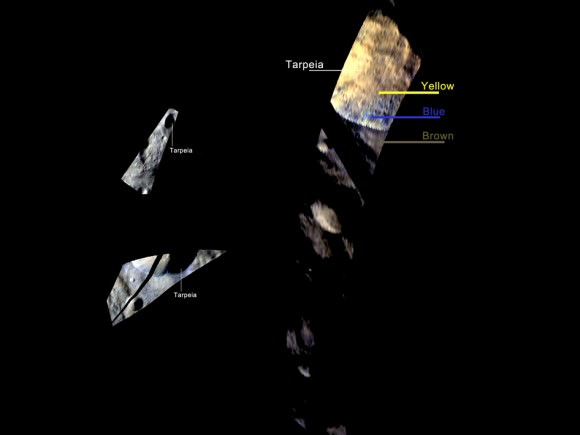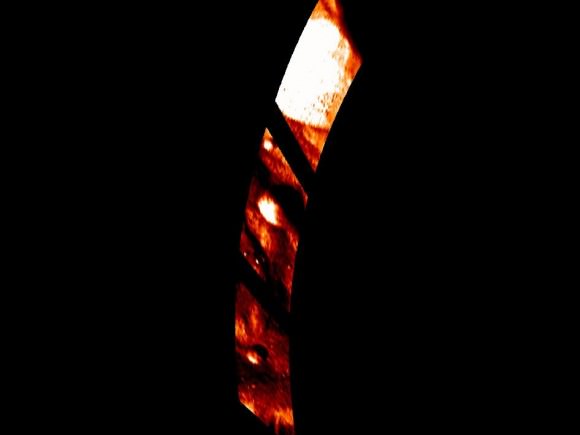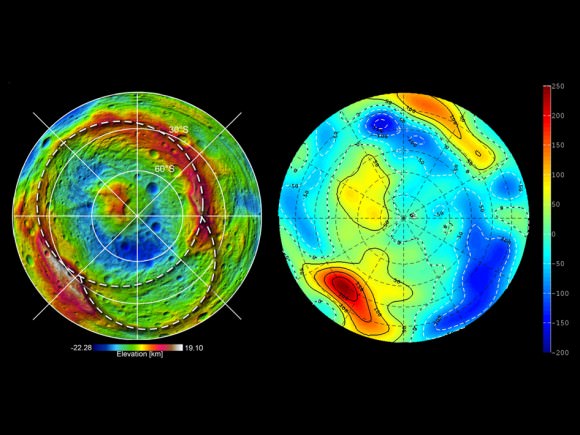[/caption]
New investigations of lunar samples collected during the Apollo missions have revealed origins from beyond the Earth-Moon system, supporting a hypothesis of ancient cataclysmic bombardment for both worlds.
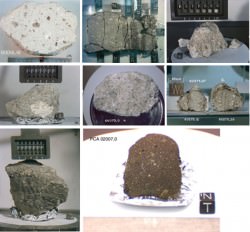
Using scanning electron microscopes, researchers at the Lunar-Planetary Institute and Johnson Space Center have re-examined breccia regolith samples returned from the Moon, chemically mapping the lunar rocks to discern more compositional detail than ever before.
What they discovered was that many of the rocks contain bits of material that is chondritic in origin — that is, it came from asteroids, and not from elsewhere on the Moon or Earth.
Chondrites are meteorites that originate from the oldest asteroids, formed during the development of the Solar System. They are composed of the initial material that made up the stellar disk, compressed into spherical chondrules. Chondrites are some of the rarest types of meteorites found on Earth today but it’s thought that at one time they rained down onto our planet… as well as our moon.
The Lunar Cataclysm Hypothesis suggests that there was a period of extremely active bombardment of the Moon’s surface by meteorite impacts around 3.9 billion years ago. Because very few large impact events — based on melt rock samples — seem to have taken place more than 3.85 billion years ago, scientists suspect such an event heated the Moon’s surface enough prior to that period to eradicate any older impact features — a literal resurfacing of the young Moon.
There’s also evidence that there was a common source for the impactors, based on composition of the chondrites. What event took place in the Solar System that sent so much material hurtling our way? Was there a massive collision between asteroids? Did a slew of comets come streaking into the inner solar system? Were we paid a brief, gravitationally-disruptive visit by some other rogue interstellar object? Whatever it was that occurred, it changed the face of our Moon forever.
Curiously enough, it was at just about that time that we find the first fossil evidence of life on Earth. If there’s indeed a correlation, then whatever happened to wipe out the Moon’s oldest craters may also have cleared the slate for life here — either by removing any initial biological development that may have occurred or by delivering organic materials necessary for life in large amounts… or perhaps a combination of both.
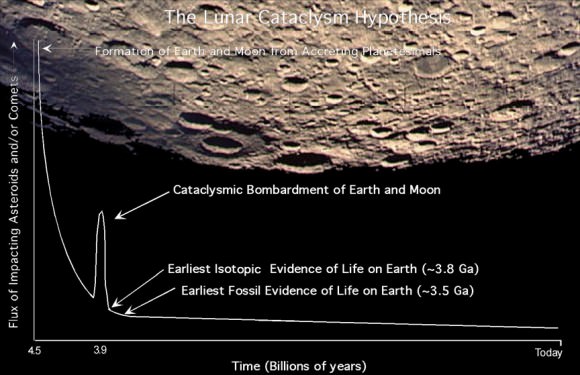
The new findings from the Apollo samples provide unambiguous evidence that a large-scale impact event was taking place during this period on the Moon — and most likely on Earth too. Since the Moon lacks atmospheric weathering or water erosion processes it serves as a sort of “time capsule”, recording the evidence of cosmic events that take place around the Earth-Moon neighborhood. While evidence for any such impacts would have long been erased from Earth’s surface, on the Moon it’s just a matter of locating it.
In fact, due to the difference in surface area, Earth may have received up to ten times more impacts than the Moon during such a cosmic cataclysm. With over 1,700 craters over 20 km identified on the Moon dating to a period around 3.9 billion years ago, Earth should have 17,000 craters over 20 km… with some ranging over 1,000 km! Of course, that’s if the craters could had survived 3.9 billion years of erosion and tectonic activity, which they didn’t. Still, it would have been a major event for our planet and anything that may have managed to start eking out an existence on it. We might never know if life had gained a foothold on Earth prior to such a cataclysmic bombardment, but thanks to the Moon (and the Apollo missions!) we do have some evidence of the events that took place.
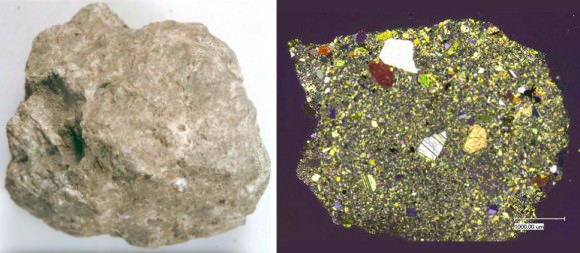
The LPI-JSC team’s paper was submitted to the journal Science and accepted for publication on May 2. See the abstract here, and read more on the Lunar Science Institute’s website here.
And if you want to browse through the Apollo lunar samples you can do so in depth on the JSC Lunar Sample Compendum site.

